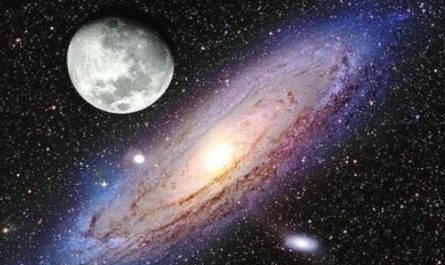From the perspective of the people on earth, the sun is really an incredibly large celestial body, its size is as big as 1.3 million earth. However, among all the celestial bodies in the solar system, even if they are ranked completely according to their size, the sun can only win a “second place”. The “championship” throne is indisputably a comet, and it is well-deserved.
The main body of a comet is the comet nucleus, which is difficult to distinguish clearly from the comet head. The diameter is not large, the small one is only a few hundred meters or a few kilometers, and the large one is only tens of kilometers to hundreds of kilometers. During most of its time when it revolves around the sun, it is such an ordinary celestial body with “unshown appearance”.
When the comet gets closer and closer to the sun, the situation is very different. When a comet moves to a distance of about 2 astronomical units from the sun, the gas evaporated from the nucleus and the dust ejected form a coma and a tail. The closer the comet is to the sun, the brighter the dim coma, and the head of the comet, including the coma, is getting bigger and bigger; especially the tail of the comet, which expands and then expands, and then extends again. The fully “developed” comet became an attractive, beautiful and strangely shaped behemoth, and won the title of “absolute champion” as the largest celestial body in the solar system.
The diameter of the comet is generally between 50,000 and 250,000 kilometers. The large comet of 1811, which holds the record of the largest comet, has a head diameter of more than 1.8 million kilometers, which is much larger than the sun’s diameter of nearly 1.4 million kilometers. Observations from outside the earth’s atmosphere have revealed that there are larger envelopes outside the coma of some comets—hydrogen clouds, some with a diameter of 10 million kilometers. A comet with such a huge comet head is beyond the reach of the sun.
It is the great comet that appeared in 1811 just mentioned. Its tail is more than 160 million kilometers long. Although it is not the champion of the comet, it is outstanding enough, especially the width of the comet is 23 million kilometers. If we regard such a comet tail as a right cone, its volume is more than 20,000 times that of the sun.
Although the comet is large in size, the “belly” is empty, and the mass of a comet tens of thousands of times larger than the sun may only have a mass of 200 to 200 billionth of that of the sun, and its density is naturally very small. In some comets, the density of the material in the comet nucleus is only about the same as that of water, that is, about 1 gram per cubic centimeter, while others are one-hundredth of the density of water.






